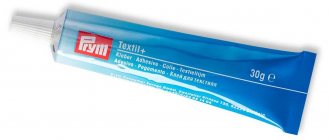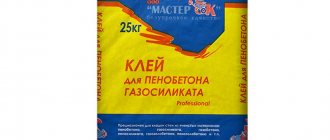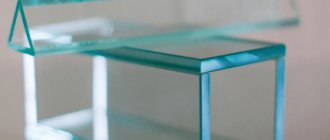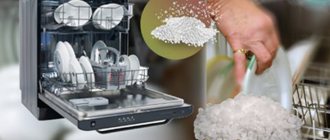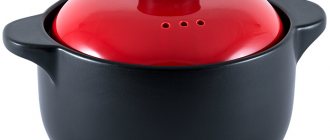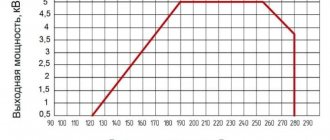Polyethylene is an unpretentious and inexpensive material, therefore it is actively used in everyday life and in some cases is irreplaceable. Sometimes situations arise in which it is necessary to glue the material, for example, when constructing a greenhouse. Not all compositions are effective in this case; you will need to use a special glue for polyethylene, which has excellent adhesive properties.
Is it possible to fasten the film with glue?
When it comes to this method of securing two pieces of material, in most cases they buy products called BF-4 or BF-2, which, according to many craftsmen, are ideal for gluing polyethylene of any size or density.
In reality, everything is somewhat different, after treating the edges of the workpieces with a 25% solution of chromic anhydride and applying an adhesive base, the seams began to peel off after a while, for the most reliable connection it was necessary to additionally resort to high temperatures, they took an iron heated to 60 degrees.
As a result, the method was not much different from the usual thermal effect, but the process was delayed in time and brought a lot of inconvenience to the master.
Using super glue - a cutting-edge approach
When faced with a difficult task and deciding how to glue the film in order to get a good result when building a greenhouse or creating a large plain canvas, it is worth paying attention to ordinary factory samples of products, in this case it is super glue.
Up to a certain point, people considered it impossible to carry out manipulations according to such a scheme, but practice has shown the opposite; the approach is truly ultra-modern and practical. Among the advantages of the product are:
- High strength connections.
- No unpleasant odor after hardening.
- Good elasticity.
- Water resistance.
You need to use the product with caution; if it gets on your hands or other areas of the skin, you can easily get burned; the solution is difficult to wipe off from household surfaces due to its potent components.
Is the choice of adhesive for joining workpieces justified?
The toxicity of the composition comes to the fore, which in some cases is unacceptable and can significantly affect the suitability of the products being processed, for example, food; eating such food will be hazardous to health.
It is impossible to check the effectiveness of the liquid in advance, so you need to buy tubes only from time-tested brands, otherwise it will not be possible to avoid unnecessary expenses for the family budget. If you follow the instructions and observe all the rules when performing manipulations, then glue for foamed polyethylene or regular film will do the job perfectly.
It is necessary to start from the area of application of the method, in some situations this approach to the matter will significantly facilitate the work, but on the other hand, it can affect the safety and suitability of the products stored in the wrapper, food will become harmful, things may become saturated with smell, but in a greenhouse or shed for recreation such moments are not scary.
Some tips for working with the material
When carrying out gluing work, you must follow the advice of the masters:
- If maximum joint strength is required, then only the welding method is used. In this case, the cooling of the weld should occur gradually.
- Cleaning and degreasing are carried out using any connection method.
- If acrylate glue was used, the connection should be kept at a temperature of 15–70 degrees for 5 hours.
- Epoxy glue does not provide the desired connection and is more difficult to work with.
- It's not difficult to make your own glue. To do this, crushed chalk or cement is added to acrylate glue.
Open flame welding of film
At the stage of choosing what to glue polyethylene with, many owners of private houses decide to use available means, such as:
- Gas-burner.
- Alcohol lamp.
- Blowtorch.
- Special cans with a nozzle.
- Paraffin candle.
When preparing the site for the process, several bars of metal or ceramic are installed; these structural details will help create, using the fixation method, perfectly smooth edges along which the master will pass with an open flame.
It is enough to allocate a few millimeters of material for soldering; taking wood or other flammable objects is not recommended. After a person runs the selected device along the edge for connection, the two segments become one whole canvas by melting, it is important to correctly select the speed of moving the nozzle along the plane in order to heat it well and not burn the material, which is often determined visually.
PVC film soldering technology
When consulting beginners, specialists pay attention to two points, without which it is extremely difficult to achieve a positive result; the situation is like this:
- At the first stage, you need to thoroughly clean the soldering area and degrease the surfaces so that the canvas does not stick to the ink.
- When connecting, ensure reliable fixation of the material until complete hardening.
The resulting microscopic holes after making the main connection are simply covered with high-quality sealants; it is important to avoid the appearance of folds, such excesses are difficult to eliminate.
This method has become popular when creating three-dimensional banners; it is easy to make 20 by 30 meter specimens from several blanks, and craftsmen also use polyethylene glue to create reservoirs of up to 500 cubic meters.
What other ways can you glue polyethylene parts?
In order to seal or fasten polyethylene parts, it is not necessary to use glue. In some cases, you can use alternative methods. The most accessible of them is heating.
Under the influence of high temperature, polyethylene melts and after hardening forms a single whole. It is not difficult to heat polyethylene to its melting point of 140°C using household electrical appliances.
Method of gluing polyethylene with an iron:
- fold the sheets of film together, fix them in the desired position;
- cover the top with a sheet of paper or aluminum foil;
- press down with a metal or wooden ruler, stepping back about a centimeter from the edge;
- pass the edge of a hot iron along the area not covered by the ruler;
- Having removed the ruler and paper, let the film cool.
At the point of contact with the iron, polyethylene sheets are sintered, forming a strong seam. Instead of an iron, you can use a regular or pulse soldering iron, the result will be the same.
I hope that the material presented is enough to reliably glue objects made of polyethylene and polypropylene on your own. The following video will help you understand the above.
Glue marking
When you come to a specialized store to make a purchase, you don’t have to immediately contact a sales consultant; having useful information about deciphering the abbreviation on the tube, you can independently select the ideal sample of the product. The most common symbols on packaging are:
- PC - polycarbonate.
- ABS copolymer of acrylonitrile.
- PP-polypropylene.
- PPMA-organic glass.
- PE-polyethylene.
- PVC-polyvinyl chloride.
- PS-polystyrene.
- PA 66-polyamide.
- PUR-polyurethane.
You can find information not only on the bottle itself, but also in the instructions, which are always included with products from reputable brands. Keeping in mind the subtleties of labeling, you can also check the relevance of the seller’s advice, because such employees are interested in selling the product and are often not very attentive to the specific goal pursued by the consumer.
Brands of connecting tape
To decide which product is exactly right for the task at hand, you need to familiarize yourself in advance with the popular types of adhesive tape that helps connect the film material.
When deciding how to glue plastic film at home, you can use just such a device to significantly facilitate the process of fixing the workpieces and not waste a lot of time working with an open flame; specialized equipment will lead to injuries or burns if handled carelessly.
"Izospan SL"
The product is excellent for creating good joints of hydro- and vapor barriers; initially, the material was used during the construction of roofs to fix protective layers to different structures of parts. The use of adhesive tape near chimney pipes is not excluded, which indicates the resistance of Izospan to elevated temperatures.
When studying information about the strength of the connection, each consumer will find an indicator on the packaging equal to 0.1 MPa, but it is not recommended to glue pieces to metal in this way; adhesion decreases several times. Experts consider a water absorption of 0.2% to be an excellent indicator; the operating temperature varies from -60 to +140 degrees.
"TechnoNIKOL"
A distinctive feature is the presence of two adhesive sides. When deciding how to glue polyethylene foam, you can safely take note of products from this brand, the material performs its basic functions well.
The length of the roll is often at least 25 meters, the width is 3.8 cm, TechnoNIKOL adhesive tape was developed only to connect blanks from components sold by this brand, but through trial and error the effectiveness of combining with canvases from other ml and bl
A service life of 15 years will surprise even the most skeptical buyer; the “ml” model has an adhesive composition on both sides of the tape, rolls are produced 25 meters long, and the strip width is 50 mm. The “bl” variety is excellent for sealing joints of hard surfaces; it is possible to achieve high-quality adhesion to a brick, concrete or wooden wall.
Nicoband
Expensive products have a tape width of 100 mm, a roll contains 10 meters of tape, and the product is available in several colors.
Mounting tape is often used to seal seams located outside the building; a 10-year warranty attracts the attention of consumers. Excellent for bonding polyethylene to plaster, metal or roofing.
Polyethylene and its properties
Polyethylene is an organic compound. Thermoplastic ethylene polymer - many thin sheets needed in everyday life.
Available in three density options: low, medium, high. Density affects the properties of the product. For example, at low density it stretches well and is elastic, but at high density it is prone to cracking.
Basic properties:
- The thicker the layer of material, the lower the transparency.
- At a temperature of -60 – -269 degrees, crystallization occurs, which will lead to cracking.
- Doesn't absorb water, doesn't even get wet by it.
- Without heating, it does not dissolve in organic solvents.
- If the temperature exceeds 80 degrees, then swelling occurs first, then dissolution in aromatic hydrocarbons.
- Shows resistance to many substances at normal temperatures.
- At temperatures above 60 degrees, it can be destroyed by sulfuric and nitric acid.
- The chrome mixture promotes oxidation of the polyethylene surface, resulting in wetting with water and the adhesive mass.
View this publication on Instagram
Publication from paint oilcloth self-adhesive (@mirkrasok_has) November 9, 2018 at 9:40 PST
Welding film for a greenhouse
Step-by-step instructions for gluing polyethylene when creating a structure in the garden or in the local area look like this:
- Two pieces of material are thoroughly cleaned of dirt.
- If necessary, place filler between layers.
- They start heating up, after melting the edges you need to stop and let them “settle”.
- Without delaying the process for a long time, dock the surface and compress tightly.
- Allow the seam to cool.
To implement your plans outdoors, it is better to resort to using a special construction hair dryer, which can raise the temperature to 250 degrees, and the modes can be adjusted depending on the weather.
Construction of non-load-bearing light structures ↑
Bonding parts of lightweight structures - indoor finishing elements, stands for displaying goods in shopping centers, which do not have special requirements during operation, is usually carried out with one-component glue. For this purpose, either heat guns with special adhesive rods, or ready-made compositions with various bases are used.
To quickly join sheets of monolithic polycarbonate, it is convenient to use a hot-melt gun with glue sticks. The process boils down to melting the rods and dosed application of hot liquid glue. This adhesive reliably attaches monolithic polycarbonate to metal, rubber, glass and other materials.
Pistols have a wide price range - Chinese models are the most affordable, devices from famous brands are much more expensive and are of high quality. So, for example, the BOSCH GKP 200 CE gun has two heating elements, electronic temperature stabilization, and high performance. Professional modern models are equipped with a glue sprayer, which allows you to quickly and economically glue large surfaces of materials.
Hot glue gun
Consumables for the operation of the heat gun are special rods purchased for a specific model. For household pistols, rods with a diameter of 7 and 11 mm are made; for industrial purposes, thicker rods are used - up to 43 mm. Short rods, 5 cm long, are sold complete with the gun; rods designed for longer use – 20 cm or more in length – can be purchased separately.
The most commonly used rods are ethylene vinyl acetate, designated EVA; the material is translucent, elastic, and non-hygroscopic. Manufacturers produce rods painted in various colors and unpainted - matte and translucent. All compositions glue well to almost any materials when they are pre-cleaned and degreased; good results are also obtained for cast polycarbonate.
Hot glue gun
The best reliability of the seam is provided by polyamide, its designation is RA; such adhesive for monolithic polycarbonate is characterized by greater rigidity, strength and melting point than ethylene vinyl acetate.
Polyamide is used only in pistols that have a “hot mode” - its melting point is 150 ° C, almost twice as high as that of ethylene vinyl acetate. The disadvantage of polyamide is the gradual decrease in strength in high humidity conditions.
Small structures can be glued without special tools using glue that does not require heating before use. Modern one-component compositions are able to ensure the strength of seams against various impacts, while maintaining the elegant appearance of the product. The most popular and high-quality products, according to experts, are the products of the German companies Weiss (COSMO series) and RöhmGmbH (ACRIFIX series).
Cosmofen products have gained popularity due to traditional German quality. A wide range of models allows you to choose adhesive for monolithic polycarbonate with the desired parameters - white or transparent composition, instant and long-term curing, with varying degrees of viscosity. All types of products have common properties:
- provide high reliability of the seam;
- withstand a wide temperature range;
- do not allow moisture to pass through;
- maintain quality under the influence of ultraviolet radiation.
Acrifix192
A very popular one-component composition based on methyl methacrylate ACRIFIX 192, which does not contain a solvent. This glue does not contain dichloroethane and provides high performance characteristics. ACRIFIX 116,117,118 adhesive also does not contain dichloroethane, but is solvent-based. The adhesion strength of such a composition is less than that of a polymerizing one; its use can have negative consequences for the properties of polycarbonate.
If it is necessary to connect flat polycarbonate surfaces to other materials, it is recommended to use double-sided adhesive tape. Sample type 4830, produced by , gives excellent adhesion thanks to the acrylic foam adhesive. Thorough cleaning of materials and degreasing of surfaces before gluing the tape is necessary.
The question of how to glue polycarbonate to polycarbonate is not a separate issue for small products made of monolithic plastic - you can use one-component glue. The best results when working with a hot-melt gun are obtained with polyamide-based glue; a reliable connection and impeccable gluing with cold-curing compounds is guaranteed by the reputation of world-famous manufacturing companies.
Chinese products
We glue the film at home
Avoiding calling specialists, some owners are wondering how to glue foamed polyethylene to metal, concrete or to each other. It is important to strictly follow the technological process, as well as consistently perform manipulations.
Often, repairing a roof, creating greenhouses or various canopies is not possible without connecting workpieces, so effective tips will definitely come in handy in everyday life.
Between themselves
Most often, BF-2 glue is used to implement an idea; this liquid dries out quite quickly, which speeds up the work of a team of builders or a person who has taken it upon himself to complete the job.
The edges need to be cleaned of dirt and degreased with acetone or technical alcohol, a thin layer of the product is applied to the surface of the material and the two workpieces are quickly combined with each other. For complete polymerization and hardening, it should be left for at least 24 hours, after which you can safely use the created canvas.
To metal
The metal base needs to be cleaned; special abrasive brushes are suitable for this; sandpaper will help to bring the surface to perfection, after which you will need to degrease the area.
The metal must be heated to a temperature of 110-150 degrees; for this it is better to take a filled blowtorch or a large gas cylinder. To bond, it is enough to press the film against the workpiece and smooth the surface with a roller, at which point the polymer will melt.
To concrete
After leveling the plane, it must be primed, for work, buy an adhesive base and apply the composition to the polypropylene from the side where there is no foil or other protective layer, if any.
It is worth reading the instructions in advance and following the manufacturer’s recommendations; often the brand advises to wait until the layer sets and is well absorbed into the material, only then begin to press the workpiece onto the concrete.
Other options
If the fixation needs to be done here and now, and the adhesive base is not available, you can use a household iron. Paper is placed on top of the two soldered edges to prevent the polymer from sticking to the heating surface of the device.
With the help of an open fire, you can also achieve good results by first connecting two pieces, just bring them to the flame, but the seam may not be as smooth as the owner of the building would like.
Features of penofol fastening
Penofol (isolon) is produced by special foaming of polyethylene. The insulation is covered with aluminum foil, which maximizes heat retention. It is used for internal and external work, in finishing production mechanisms, preserving heat in pipelines or air conditioning systems. It comes in rolls and individual plates. It may have additional characteristics – thickness, color. The bonding of foil to the plane of foamed polyethylene can be chemical or physical (cross-linked).
- small thickness;
- environmentally friendly;
- does not require additional skin and respiratory protection;
- there is no need for special tools;
- ease of fastening.
Glue is used for penofol with foil on one side.
Double-sided insulation is used for thermal insulation of loggias, garages, and pipes. They are attached to the sheathing or purchased polyethylene foam with a self-adhesive surface.
Due to the lightness of the insulation material, the load-bearing capacity of the adhesive is not so important.
How to solder film
In addition to the popular brands BF-2 or BF-4, sometimes 80% acetic acid is used to implement the plan. Do not forget about the pre-treatment of two planes with chromic anhydride with an indicator on the package of 25%.
For fixing polyamide film, a specialized composition PK-5 is often purchased, but with this approach to the process without ironing with a heated iron, it will be difficult to obtain a reliable seam. One bottle of solution of 50 ml should be enough for a joint of 15-20 meters, if you take a serious approach to manipulation technology.
When choosing super glue, you also need to be careful and follow precautions, as with all other types of compounds. Such cutting-edge products can be useful in repairing polymer canvas; to do this, it is enough to apply a thin layer of the product and apply a patch, pre-cut to size.
To use the product, you should wait 2 hours, which is considered an excellent result; old samples of the material are no less productive and reliably connected, but it is better to work outside only in sunny weather.
Plastic pipes for gluing
PVC water pipes are made by extrusion from polyvinyl chloride, a thermoplastic polymer with a limited operating temperature. PVC is one of the cheapest plastic materials to produce, which results in a low cost of the final products.
There are two types of polyvinyl chloride pipes, differing in technical characteristics - products made from regular PVC and CPVC (chlorinated):
- PVC pipes are used for the installation of cold water supply systems, sewerage (pressure and free-pressure) and drainage systems; they can also be used as casing pipes when drilling water wells. The maximum operating temperature is +40 degrees;
- CPVC pipes have greater heat resistance (working temperature maximum +90), they can be used in hot water supply systems and heating communications (radiator heating, heated floors).
CPVC, and any other polymer products, can be connected in three ways:
- using fittings;
- using soldering (high temperature welding);
- using gluing (cold welding).
Joining by soldering and adhesive joints are non-separable - after joining, a monolithic structure is formed, while pipelines connected by fittings (threaded and compression) must be dismantled. However, it is worth considering that a monolithic joint is much more reliable, it reduces the risk of system leaks to zero, and according to the technology used, adhesive joining of plastic pipes is the simplest and fastest installation method.
CPVC pipes and fittings
Using adhesive joints, water pipes and heating communications of the following types can be assembled:
- polyethylene (PE, HDPE, LDPE);
- polypropylene (PN);
- metal-plastic (PEX, PE-RT).
Performance characteristics of CPVC pipes
CPVC pipes are the optimal choice when installing water supply, heating and sewerage systems based on the totality of their operational characteristics. The advantages of these products are:
- high mechanical strength and resistance to deformation (tensile strength of CPVC is 80 mPa, elastic modulus is 2500 mPa);
- possibility of use in pressure pipelines (they are available in three modifications - PN10, 16 and 25, designed for the appropriate pressure);
- minimal linear expansion when heated (does not exceed 0.6 mm/m);
- ideally smooth internal walls (roughness coefficient 0.6), on which no foreign formations appear, which guarantees the preservation of the original hydraulic characteristics throughout the entire life of the pipeline;
- complete resistance to corrosion and chemically aggressive substances, due to which a long service life of 50 years is achieved.
CPVC pipes are available in a diameter range of 16-225 mm, SDR (diameter to wall thickness ratio) can vary from 6-41. The ring stiffness directly depends on the SDR parameter - how much pressure the pipeline can withstand without undergoing deformation.
Characteristics of reinforced film for greenhouses
The indicators of the material are most often paid attention to by owners of country houses who want to purchase film and not be upset about the service life; how long the greenhouse will last directly depends on the choice of canvas. Experts advise looking at the following characteristics:
- Roll length.
- Width.
- Density per 1 cubic meter cm.
- Color design.
The polymer material must transmit at least 75% of sunlight so that the gardener can save on additional lighting. In bad weather, the frame can remain undamaged only if you buy the most durable film samples, and over time, the destructive effects of the environment will not affect the integrity of the canvas.
Application for gluing plastics
Edible glue, intended for decorating pastries and pies, has a property that helps it be used for other than its intended purpose. Among kitchen utensils today, plastic utensils occupy a large place.
If your favorite plate, cup or food container gets cracked and breaks at the most inopportune moment, you can use food grade glue for a quick fix. To do this, it is necessary to dilute the SMS thickener (or carboxymethylcellulose) in water not in the usual ratio of 1 to 30, but in a more concentrated ratio of 1 to 45. The mixture is thoroughly mixed in a bottle with a lid. Its structure will gradually become homogeneous and suitable for use. If the consistency is too thick, you should add water to the composition.
After repair using edible glue, plastic utensils can last for a very long time without causing harm to those who use them.


